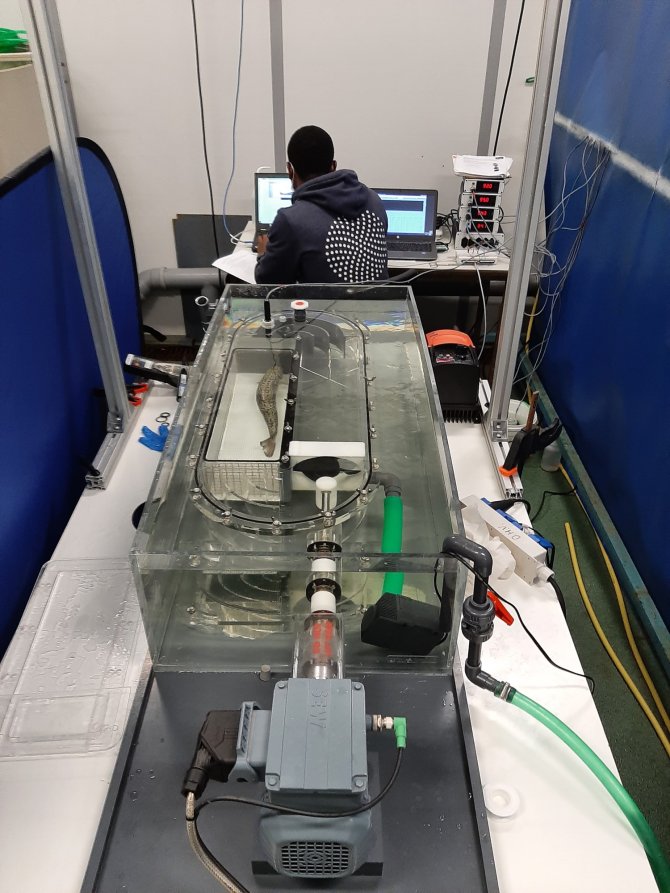
Project
Individual Energy Monitor
The Individual Energy Monitor project includes energy metabolism measurements for animals. The knowledge derived from this project can be applied to fish and livestock breeding, as well as animals in the wild.
Animals in the wild are frequently faced with limited food availability, making efficient energy consumption crucial to the success of individual organisms. Factors like climate change, pollution, pathogens or other disruptions of the living environment impact an animal’s energy consumption. Animals that do not expend excessive amounts of energy when tackling such situations have a better chance of survival, growth and procreation.
The researchers of the Individual Energy Monitor project seek to discover how long-term disruptions of the environment impact the energy metabolism of animals. To this end, they use sensors to simultaneously measure motion, heart rate, respiration and food intake. The objective of this research is to gain more insight into the energy consumption of animals, allowing for the rapid detection of deviations in the fish and livestock breeding sector and estimations of the way environmental factors can influence populations in the wild.
Progress (July 2023)
The possibilities of various sensors were researched in clams and fish. In the case of the clams, for instance, microsensors to measure oxygen levels were secured to the inside of the shell. These measurements showed that the oxygen supply within the shell depleted within a few minutes when the clam closed its shell in case of pollution or when the water around it disappeared. In these situations, the animal needs to switch to less efficient, anaerobic metabolism virtually immediately.
The heart rate, acceleration, oxygen consumption and swimming behaviour of fish are measured in swim tunnels with configurable water flow rates. During stress tests, the water level in these tunnels was lowered to a minimum. In the near future, in cooperation with a Norse research team, measurements of the arterial oxygen tension will also be added.

In cooperation with the University of Twente, the researchers developed a biochip to measure cytokines in blood, and in cooperation with the Max Planck institute, the applicability of a wide array of microsensors was assessed.
This year, the researchers will start development of a digital twin of the animal which, based on the sensor data, shows how much energy is consumed at a given time and what activities it is used for.